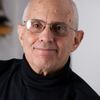Last weekend I attended a conference in Washington sponsored by Hindu American Seva Charities (HASC), a non-profit established by Anju Bhargava, a formidable business executive and a member of President Obama's inaugural Advisory Council on Faith-Based and Neighborhood Partnerships. The conference was titled Enlivening Dharmic Seva: Impacting Change in America and Abroad. With a few exceptions, such as me, the 200 or so participants were Hindu Americans of Indian descent. There were keynote speakers, including former U.S. Senator Harris Wofford and White House staffers, and panels of experts expounding on a variety of themes. Mostly, it was about young people: American born Hindus, ranging from middle schoolers to recent college grads, with a passion for seva, a Sanskrit term best translated as selfless service.
The most surprising part of the weekend for me was the tribute to Hindus serving in the armed forces. These were not civilian software engineers at the Pentagon; they were warriors who had joined our volunteer military. I don't know why this should have surprised me. After all, patriots from every new ethnic and religious group have done the same throughout the nation's history. Perhaps seeing their proud faces atop snappy dress uniforms instead of kurtas or Nehru jackets shocked me into the recognition of their Americanness. The articulate strength and dedication of people like Lieutenant Colonel Ravi Chaudhary and Captain Pratima Dharm, the nation's first Hindu military chaplain, was as moving as it was eye-opening.
The most inspiring part of the conference was the eighty or so Hindu American youngsters, whose intelligence, poise and determination made me feel hopeful for the future, despite the fact that, just down the road, the so-called adults who run the U.S. government were jeopardizing that future with their debt ceiling lunacy. I found myself wishing I could replace the Congressional leadership with those youngsters, who were bursting with creative ideas for making the world a better place. Footage of their confident speeches should be shown to anyone who doubts that America's uniqueness is largely attributable to the continuous flow of energetic immigrants.
While in many ways the advent of Hindu Americans recapitulates the familiar immigrant story, it is also uniquely significant. Unlike Judaism, Catholicism and Islam, all newcomers to America at one time, Hinduism is not a variation on the Abrahamic tradition that arose in the Middle East and is rooted in biblical history and theology. It shares with other religions similar ethical principles, but it also represents a fundamentally different world-view. Beneath its colorful and much misunderstood iconography and rituals is a rational, pragmatic and uniquely pluralistic foundation centered on individual choice, inner spiritual development and union with the ultimate reality that goes by many names.
I consider this India's great gift to the West. Others, of course, find it threatening. Some of the youth at the HASC conference told disheartening stories of ostracism, harassment and crude attempts at conversion by Christian classmates. This is as disturbing as it is difficult for teenagers to handle, and one hopes that corrective measures will be taken. At the same time, this too shall pass. After all, not that long ago many Americans thought Jews had horns and drank the blood of Christian babies on Passover. If Hindu youngsters avail themselves of their tradition's own treasures, they will be able to respect the proselytizers' religious convictions while at the same time cultivating inner peace and the capacity for skillful action through yogic practices. Over time, I'd predict that the ostracizers and would-be converters are more likely to be influenced by their Hindu counterparts than vice versa.
As I've documented in my book, American Veda, the core principles and practices of the Vedic heritage from which modern Hinduism derives have been seeping into the soil of America for over 200 years. The transmission has occurred through books, gurus and yoga masters, artists and musicians, scientists and scholars, and now it continues in subtle, mostly unintentional ways as Americans of Indian descent mingle with others in classrooms, workplaces and social settings.
No guru has ever asked a Westerner to convert to Hinduism, and neither would a Hindu friend or coworker; the very concept of conversion is anathema to Hindus. But ideas disseminate through friendly human interaction, and the result is often twofold: 1) misconceptions (e.g., that Hinduism is polytheistic or inherently caste-oriented) get cleared up, and 2) new ideas about spirituality, the self and the sacred get conveyed. As evidenced by the enormous interest in yoga and meditation, a large number of Americans have found the Indian model of inside-out spirituality to be quite compatible with modern life. Many have reoriented their own spiritual outlooks and practices accordingly, claiming it has made them deeper Christians, Jews or secular self-improvers.
So get ready for the next generation of Hindu Americans. We're already familiar with Indian names in prominent places: Sanjay Gupta, Deepak Chopra, filmmaker Mira Nair, novelists like Anita Desai, PepsiCo CEO Indra K. Nooyi and too many Silicon Valley engineers and entrepreneurs to mention. Your doctor or lawyer might be of Indian descent. Now, accent-free, well-educated and thoroughly American Hindus will, like Jews and Catholics and Muslims before them, come to occupy a wide variety of professions, form a broad range of friendships and associations, intermarry and otherwise assimilate. As I jokingly tell my Hindu friends, one day they'll even have their own Jackie Robinson/Hank Greenberg/Roberto Clemente moment, when a ballplayer named Patel or Bannerji or Coomaraswamy jogs onto the field of a Major League All-Star Game. I say we greet them all with a rousing Namaste.
